Date : January 27 - 29, 2016
Press Tour to Hokkaido (Sapporo and Obihiro) “Turning Snow into an Advantage”
post date : 2016.01.06
Sapporo: The wisdom of the metropolis boasting the heaviest snowfalls in the world
Obihiro: Japan’s biggest agricultural production center despite frigid weather
<Sapporo and Obihiro: Hosts of the 2017 Asian Winter Games>
―― Sapporo City ――
Sapporo, Hokkaido’s capital, has the heaviest snowfall in the world for a city with a population of over 1 million. The high volume of snow causes issues in the city, disrupting traffic and damaging buildings. Battliing to clear snow is also an economic burden.
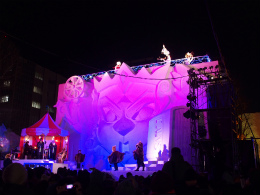
However, Sapporo has turned that snow into a tourist attraction, with 2.4 million attendees at the Sapporo Snow Festival. The city also has facilities where they store the snow cleared from the streets to use for cooling once spring comes. Sapporo is also a mecca for winter sports in Japan, and has even hosted the Winter Olympics. It is possible to see the wisdom of the people in this city, who live with and utilize snow.
―― Obihiro City and the surrounding Tokachi Area ――
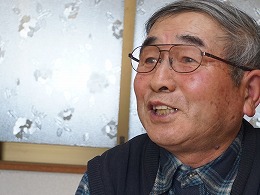 Hokkaido is also the biggest agricultural region in Japan, accounting for 1/4 of the nation’s farmland, and is the largest producer of wheat, potatoes, soybeans, sugar beets, and raw milk.
Hokkaido is also the biggest agricultural region in Japan, accounting for 1/4 of the nation’s farmland, and is the largest producer of wheat, potatoes, soybeans, sugar beets, and raw milk.
In particular, the Tokachi area in eastern Hokkaido (consisting of 19 municipalities, including Obihiro City) is the heartland of both crop and livestock farming in Japan. The area produces 30% of Japan’s potatoes and 15% of its raw milk, and with a food self-sufficiency ratio of 1,100%, Tokachi supplies food for households across Japan. Ever since development efforts in the Meiji period, the region’s residents have expanded agriculture despite the severe cold, with temperatures dropping below minus 10°C.
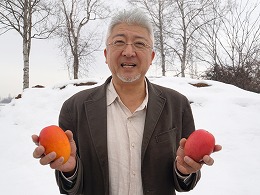 Even now, there is a farm in this area that stores potatoes in a snow-filled warehouse in order to increase their sweetness and enable shipping them throughout the year, an entrepreneur who succeeded in cultivating mangos during the winter by using snow and the heat from hot springs, and a dairy farmer who has added value to his farming by raising dairy cows suited to cold climates and producing ice cream in addition to raw milk. These examples show how farmers in this area have survived by cleverly taking advantage of the snow and cold climate.
Even now, there is a farm in this area that stores potatoes in a snow-filled warehouse in order to increase their sweetness and enable shipping them throughout the year, an entrepreneur who succeeded in cultivating mangos during the winter by using snow and the heat from hot springs, and a dairy farmer who has added value to his farming by raising dairy cows suited to cold climates and producing ice cream in addition to raw milk. These examples show how farmers in this area have survived by cleverly taking advantage of the snow and cold climate.
------------------------------------------------------------------------------------------------------------------
This press tour will visit Sapporo City and Obihiro City (as well as the surrounding Tokachi area), hosts to the Asian Winter Games to be held in February 2017.
・In Sapporo, there will be an interview with the mayor, as well as examples of the utilization of snow and information on Yezo deer.
・In Obihiro and the Tokachi area, the tour will find out about three agricultural producers who use the snow and cold climate to their advantage. The tour will also visit Ban’ei Horse Racing, the only place in the world holding a type of race which is a part of the history of agriculture in Hokkaido’s frontier period.
・In both Sapporo and Obihiro, the tour will visit the venues for the Asian Winter Games, showing another facet of Hokkaido as a place to enjoy the snow and cold with winter sports.
------------------------------------------------------------------------------------------------------------------
* This press tour is sponsored by the 8th Sapporo Asian Winter Games Organising Committee, and planned and operated by the Foreign Press Center Japan.
【Tour Details】
----------------------------------------------------------------------------------------------------------
I. Sapporo City
With the heaviest snowfall among the world’s major metropolises, the city has the wisdom to capitalize upon its major-league snowfalls for attractions and other resources
---------------------------------------------------------------------------------------------------------
1. Interview with Sapporo Mayor Katsuhiro Akimoto
https://www.city.sapporo.jp/city/mayor/profile/akimoto_profile.html
http://www4.city.sapporo.jp/global/english/
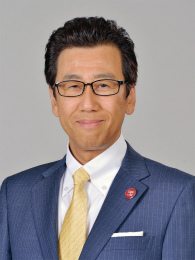 Sapporo, the hub of Hokkaido with a population of 1.9 million, is the fifth largest city in Japan. With an annual snowfall of 6 meters, the city’s snowfalls are the largest among the world’s cities with more than 1 million residents. Maintaining the functions of the town while battling to clear snow from roads, pavements, and other essential parts of the metropolis—and then transporting it for dumping—is no easy task. On the other hand, snow also helps generate considerable pleasure for the many residents and visitors who enjoy winter sports in Sapporo. These attributes make Sapporo an ideal location for the Asian Winter Games in February 2017.
Sapporo, the hub of Hokkaido with a population of 1.9 million, is the fifth largest city in Japan. With an annual snowfall of 6 meters, the city’s snowfalls are the largest among the world’s cities with more than 1 million residents. Maintaining the functions of the town while battling to clear snow from roads, pavements, and other essential parts of the metropolis—and then transporting it for dumping—is no easy task. On the other hand, snow also helps generate considerable pleasure for the many residents and visitors who enjoy winter sports in Sapporo. These attributes make Sapporo an ideal location for the Asian Winter Games in February 2017.
The Games are administered by the Olympic Council of Asia, comprised of 45 Asian countries and regions, with the aim of promoting winter sports in Asia. Obihiro will join Sapporo in hosting the event next year. Sapporo, which has announced its bid to host the 2026 Winter Olympics and Paralympics, will primarily provide venues for skiing events, taking advantage of the area’s excellent snow.
While directly experiencing the famed snows of this prosperous city, visitors will be able to observe specific examples of the perceptiveness and ingenuity behind the leveraging of the region’s frozen bounty into attractions and other resources. Among the city’s top crowd-pullers is the Sapporo Snow Festival, which attracts numerous tourists thanks to the around 200 snow statues specifically crafted for the event. Sapporo also promotes the storage of snow and ice for energy-related purposes, such as cooling.
◆During the interview, tour participants can ask Mayor Akimoto about his thoughts as head of the city hosting the 2017 Asian Winter Games, and other such pertinent topics. Inquiries about Sapporo’s bid to host the 2026 Winter Olympics and Paralympic Games will also be welcomed, as will questions related to the city’s snow-related endeavors.
2. A mecca for aficionados of winter sports. Exploiting the snows of a major metropolis
・Okurayama Jump Stadium
・Sapporo Winter Sports Museum
http://www.sapporo-dc.co.jp/eng/okurayama/jump/index.html http://www.sapporo-dc.co.jp/eng/okurayama/museum/index.html
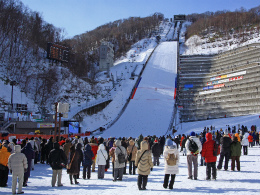
Located about 7 kilometers from the heart of the city, Okurayama Jump Stadium hosted the large-hill event during the 1972 Sapporo Winter Olympics, and has also served as the venue for World Cup contests and numerous other international competitions. By taking a ski lift to the top of the jumping hill, visitors can survey the jumpers’ starting point and perhaps gain an insight into the athletes’ thoughts as they step onto the vertiginous slope, gather momentum and leap into the ether. The stadium is among Sapporo’s top tourist spots, on account of its panoramic views of the city.
The venue hosts the largest number of international ski jump competitions in Japan. It is rare for a major city like Sapporo to have a large-hill, ski jump stadium, and, in fact, Sapporo is the biggest city in the world with such a facility. The stadium is a popular spot among city residents, too, and attracts large throngs during competitions. Since its construction in 1931, the venue has been regarded as a mecca for winter sports. During the 2017 Asian Winter Games, large numbers of spectators are expected to watch competitors from Asian nations vie fiercely for medals at this large-hill location.
◆Participants will tour Okurayama Jump Stadium, including a ski lift ride to the top of the jump hill, providing a chance to inspect the facility in-depth. Tour participants will also visit the Sapporo Winter Sports Museum, where a curator will expound upon Sapporo’s association with winter sports.
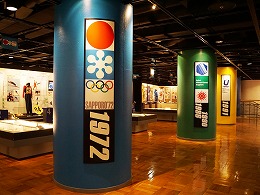
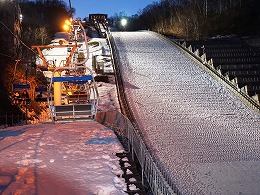
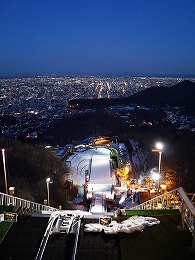
3. Creation of snow statues / Preparations in the run-up to the Sapporo Snow Festival: Turning snow into an attraction that has huge economic effects
・An official from the Tourism Policy Planning Section of the Sapporo City Government
・Mr. Takatomo Morioka, leader of the No.1 snow statue production group of the Sapporo Snow Festival’s large snow statue production committee
http://www.snowfes.com/english/index.html
http://www.city.sapporo.jp/keizai/kanko/program/documents/houkokusyohpkeisai.pdf
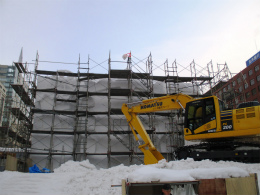
The Sapporo Snow Festival is an annual snow-and-ice extravaganza. About 200 snow statues and ice sculptures are exhibited in early February in several venues across the city. Sapporo held its first snow festival in 1950 and next month’s event will be number 67. About 2.4 million people visit the festival each year, making it one of Hokkaido’s most popular events. In recent years, there has been a surge in foreign visitors, who account for 6.4 percent of total visitors to the festival. The economic effect of the festival has been calculated at \41.9 billion (based on figures from 2014), providing a shot in the arm for the local economy.
The most famous feature of the festival is the gigantic snow statues, some measuring as high as 15 meters. It takes about 25 days to complete a large snow statue (with a cumulative total of 1,000 people working on it). The city government makes three large snow statues each year, with the help of local volunteers.
Sapporo has to cope with annual snowfalls totaling 6 meters, and faces traffic disruptions and expensive bills to remove and transport the snow—a heavy burden for a city. Nonetheless, the Sapporo Snow Festival exemplifies the sagacity of the people who live side-by-side with the snow, and demonstrates what can be done with the area’s frozen cornucopia in terms of enjoyment and making the city ever-more attractive.
◆One week prior to the festival opening, participants will visit one of the festival venues and witness the creation of snow statues, guided by one of the officials in charge of the festival. We will interview Mr. Morioka, a snow statue specialist who orchestrates the production of the three gigantic statues made annually by the city. Mr. Morioka is a veteran who will be contributing to his 38th festival this year.


4. Snow/ice energy-related uses: storing snow for cooling purposes
・The supply of snow/ice energy via use of the Toshin Kita Snow-Melting Tank
http://www.city.sapporo.jp/kankyo/energy/shokai/snowiceenergy.html#s04 (Japanese)
https://www.city.sapporo.jp/kensetsu/yuki/jigyou/yuu_toshinkita.html (Japanese)
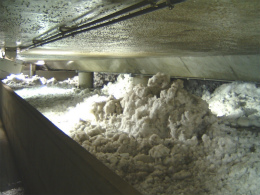 Energy derived from snow and ice is used to air-condition buildings and refrigerate agricultural products. Snow and ice harvested during winter is stored for use in warmer seasons. The cold temperature of the snow and ice—and meltwater—is utilized for cooling purposes.
Energy derived from snow and ice is used to air-condition buildings and refrigerate agricultural products. Snow and ice harvested during winter is stored for use in warmer seasons. The cold temperature of the snow and ice—and meltwater—is utilized for cooling purposes.
Sapporo promotes the use of snow/ice energy; one example being the Toshin Kita Snow-Melting Tank, which is located under the North Exit Square of Sapporo Station. The primary purpose of this facility is to make the removal and dumping of snow in the heart of the city more efficient. “Snow in the heart of city, melts in the heart of the city” serves as an operational concept in which snow is collected and dumped in an underground pool in the city center (instead of transporting snow with large trucks to distant locations) and melted using heat from a local energy plant.
As a secondary use, the pool is used to store snow/ice energy. About 4,000 square meters of snow dumped at the end of the snow season is stored and used to air-condition buildings in the vicinity using a system known as the “Heat-Exchange, Cold-Water-Circulation Method.” Each year, the system operates for one month starting in April, during which energy consumption is reduced by an average of about 50 percent (based on the five years from 2011 to 2015) compared to the corresponding period without the system.
◆Participants will inspect the snow-melting pool after being briefed on its mechanism and functions by one of the Sapporo city officials in charge of the facility.
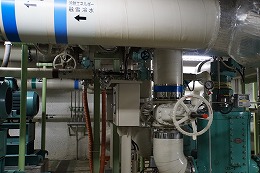
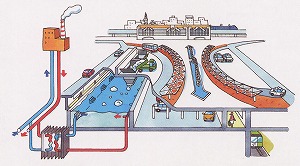
5. Aiming to coexist with a surging number of Yezo deer: from simple culling to use as a gourmet food
・Promoting coexistence with Yezo deer
Ms. Yukiko Matsuura, director of the Yezo Deer Association
・Development of recipes for tasty deer-meat fare (using sweet soy sauce)
Mr. Yasuo Tamaki, president of Tamaki Shoten, Co. Ltd.
http://www.gyokusuien.co.jp/yukimomiji.html
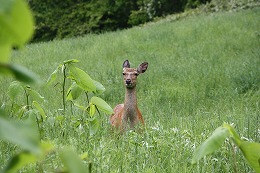 The number of Yezo deer has skyrocketed in Hokkaido in recent years. As these deer eat saplings and rare plants, they threaten forest ecosystems in the region. Yezo deer also eat agricultural products and are frequently hit by automobiles and trains, causing problems for society at large.
The number of Yezo deer has skyrocketed in Hokkaido in recent years. As these deer eat saplings and rare plants, they threaten forest ecosystems in the region. Yezo deer also eat agricultural products and are frequently hit by automobiles and trains, causing problems for society at large.
However, a movement has emerged to effectively use the deer—a natural resource indigenous to Hokkaido. Instead of simply culling the animals as vermin, their numbers are controlled to help maintain the delicate balance of the ecosystem.
The Yezo Deer Association, established in 1999, works to control deer numbers, reducing the damage they cause while also using the deer for human benefit. The group’s primary aim is to achieve harmonious coexistence between Yezo deer, humans and forests. Deer meat is high in protein and iron, and low in fat—facts that have helped attract attention to it as a food item that can help prevent lifestyle-related diseases. Shooting deer in the wrong part of the body when hunting—or improper butchery methods—causes an unpleasant odor in the meat, making it difficult to distribute for human consumption. To help address this situation, the association disseminates information on hunting and butchering deer, so the meat can be used commercially. It has also established a certification system—with very strict standards—for treatment and processing facilities that deal with Yezo deer meat. Facilities that meet these high standards are allowed to use the association’s certification mark.
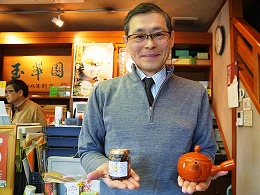 Recently, the number of restaurants offering Yezo deer-meat dishes has been gradually increasing, as has the number of processed deer-meat products. Yasuo Tamaki, president of Tamaki Shoten, Co. Ltd.—a company that produces and sells Japanese green tea—is himself a hunter, who desperately wants to save forests from falling into ruin. Tamaki thought that using deer meat for human consumption would be an effective way to control the deer population, and searched for ways to make deer meat tastier to eat. He eventually succeeded in developing recipes to mitigate its unique, but unpleasant flavor, by boiling the meat in hojicha (roasted tea), one of the products his company makes. The meat, cooked in “tsukudani” style (simmered in sweet soy sauce), goes well with rice. The product has built up a good reputation since coming to market, with uptake boosted via word of mouth.
Recently, the number of restaurants offering Yezo deer-meat dishes has been gradually increasing, as has the number of processed deer-meat products. Yasuo Tamaki, president of Tamaki Shoten, Co. Ltd.—a company that produces and sells Japanese green tea—is himself a hunter, who desperately wants to save forests from falling into ruin. Tamaki thought that using deer meat for human consumption would be an effective way to control the deer population, and searched for ways to make deer meat tastier to eat. He eventually succeeded in developing recipes to mitigate its unique, but unpleasant flavor, by boiling the meat in hojicha (roasted tea), one of the products his company makes. The meat, cooked in “tsukudani” style (simmered in sweet soy sauce), goes well with rice. The product has built up a good reputation since coming to market, with uptake boosted via word of mouth.
◆Participants are free to question Ms. Matsuura on issues regarding Yezo deer and the activities of her association, and can also speak with President Tamaki, who has developed recipes to turn deer meat into gourmet fare.

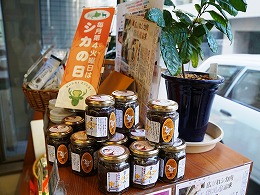
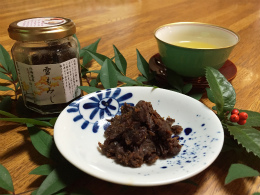
---------------------------------------------------------------------------------------------------------
II. Obihiro City in Tokachi Area
The erudition of people that use snow: Japan’s biggest agricultural production center,
with a backdrop of frigid weather
---------------------------------------------------------------------------------------------------------
6. Imbuing potatoes with high value and supplying them year-round. Storing potatoes in a snow-filled structure makes them sweeter
・Moriura Farm Mr. Masaaki Moriura (72)
http://www.moriura.net/yukimuro/index.htm
The Tokachi area of Hokkaido is an ideal environment for increasing the sugar level of crops. This is made possible by the region’s climate: long hours of sunlight and large differences in temperatures throughout the course of each day. Masaaki Moriura’s family has been farming in Tokachi for four generations, cultivating about 35 hectares of farmland. Moriura cultivates wheat, beet and beans, but he gives particular emphasis to potatoes. Working with 10 varieties, his farm produces more than 350 tons of potatoes a year. Since 1995, Moriura has stored and matured harvested potatoes in a warehouse filled with natural snow, with the aim of supplying tastier crops over an extended period of time. When stored at low temperature and high humidity in a snow-filled structure, potatoes change starch into sugar to prevent freezing, thus making them much sweeter. Storage periods differ depending on particular varieties: some potatoes are stockpiled for several months, while others are squirreled away for as long as two winters.
 In addition to enhanced sweetness, snow-based storage of potatoes has another major benefit in that the tubers retain their flavor over a long period, and can consequently be shipped throughout the year. Since he started using snow to store his crops, Moriura has seen a rise in client numbers, mainly restaurants in the Tokyo metropolitan area that sign a direct contract with his farm and appreciate the stable supply of high-quality potatoes throughout the year at a stable price. As the price of potatoes is not subject to market fluctuations, both parties benefit from these transactions.
In addition to enhanced sweetness, snow-based storage of potatoes has another major benefit in that the tubers retain their flavor over a long period, and can consequently be shipped throughout the year. Since he started using snow to store his crops, Moriura has seen a rise in client numbers, mainly restaurants in the Tokyo metropolitan area that sign a direct contract with his farm and appreciate the stable supply of high-quality potatoes throughout the year at a stable price. As the price of potatoes is not subject to market fluctuations, both parties benefit from these transactions.
◆Tour participants will visit Moriura Farm to see how potatoes are stored using snow, and can interview Mr. Moriura about his farming- and snow-related methodologies.
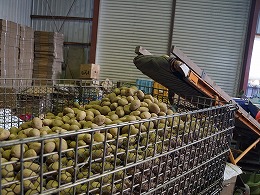

7. “Hakugin no Taiyo (Sun in the Snow)”—Mangos cultivated using snow and hot-spring heat produce a winter harvest
・Noraworks Japan President Hiroyuki Nakagawa (54)

Hiroyuki Nakagawa originally ran a rental warehouse company, but decided to cultivate mangos after meeting a farmer from the southern prefecture of Miyazaki who told him it was possible to grow and harvest mangos in Hokkaido during the winter season. Miyazaki Prefecture is known for being one of Japan’s top mango-growing regions. Nakagawa started growing the fruit on a trial basis in 2010 while receiving advice from the Miyazaki farmer. One year later, he established a joint stock company, Noraworks Japan, with part of the capital coming from local business-owning acquaintances. Initially, few people took his plan seriously, but in 2014 Nakagawa eventually succeeded in commercializing his mango-growing business. The winter harvesting of mangos is attracting a lot of attention.
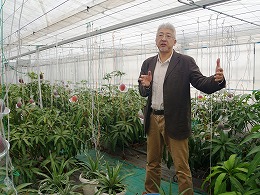 Though mangos are usually harvested in summer, the ones grown by Nakagawa can be harvested in winter by “reversing the seasons” in a greenhouse—a feat made possible by environmental conditions in the Tokachi region. During summer, an anti-freeze solution is circulated within pipes that run through soil in the greenhouse, which is cooled by snow stored from the previous winter. This lowers the soil temperature, thus creating a wintery environment within the structure. In winter, meanwhile, the pipes are heated by water from a nearby hot spring, raising the soil temperature. In this way, the temperature inside the 750-square-meter greenhouse is kept at nearly 30°C during the day, while the outdoor temperature can drop as low as minus 15°C around the time the mangos are harvested in midwinter. 80 percent of the energy used to grow the mangos is derived from snow, hot-spring heat, solar power and other kinds of renewable energy.
Though mangos are usually harvested in summer, the ones grown by Nakagawa can be harvested in winter by “reversing the seasons” in a greenhouse—a feat made possible by environmental conditions in the Tokachi region. During summer, an anti-freeze solution is circulated within pipes that run through soil in the greenhouse, which is cooled by snow stored from the previous winter. This lowers the soil temperature, thus creating a wintery environment within the structure. In winter, meanwhile, the pipes are heated by water from a nearby hot spring, raising the soil temperature. In this way, the temperature inside the 750-square-meter greenhouse is kept at nearly 30°C during the day, while the outdoor temperature can drop as low as minus 15°C around the time the mangos are harvested in midwinter. 80 percent of the energy used to grow the mangos is derived from snow, hot-spring heat, solar power and other kinds of renewable energy.
After registering a trademark for his mangos, “Hakugin no Taiyo (Sun in the Snow),” Nakagawa began shipping his produce in earnest at the end of 2014, dispatching a new batch of the fruit during the same period last year. Off-season mangos can be sold at a high price and are proving to be a popular gift. Last year, Nakagawa’s mangos were selling at department stores in the Tokyo metropolitan area for around \15,000–\30,000 on average per fruit, as year-end gifts. One particular mango changed hands for \50,000. Nakagawa expects to ship around 2,400 mangos this year—500 more than last year.
Nakagawa is also keen to meet the fresh challenge of raising other tropical fruits using the snow-and-hot-spring-heat method he employs for mango-cultivation. “I’d like to make Tokachi a fruit production center in winter, providing a boost to the local economy,” he says.
◆Tour participants will visit Noraworks Japan’s greenhouse to observe how the mangoes are grown, and will have the opportunity to talk with Mr. Nakagawa.
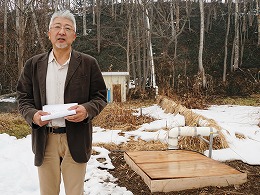
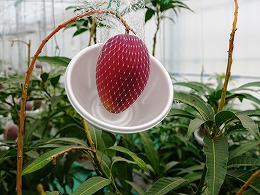

8. Venturing into sixth-sector industrialization (providing value-added agricultural products). Dairy farmers connect with consumers by telling them about the current state of dairy farming
・Liberty Hill Hirose Ranch — Director Fumihiko Hirose (63)
・Uemon’s Heart — Store Manager Mayumi Hirose (63)
The Tokachi area of Hokkaido is referred to as a Japanese dairy-farming kingdom. Dairy farming prospered in the region thanks to its very cold weather, which is suited to growing pasture grass and corn crops for cow feed. Holsteins, a type of milk cow, are able to withstand temperatures as low as minus 25°C. Fumihiko Hirose, a dairy farmer with 160 milk cows in the area, has welcomed visitors to his ranch since 1991, informing them about the current state of diary farming. Each year, about 2,000 people visit the ranch, ranging from local schoolchildren on field trips to tourists.
 Hirose was prompted to accept callers by such factors as the Uruguay Round of multilateral trade negotiations, which opened the Japanese markets to the import of U.S. beef and oranges. He recalls strongly perceiving that the era in which farmers had enjoyed government protection was over. Furthermore, he says he became cognizant of the gulf between milk producers and consumers when a primary school student from Tokyo asked him, “Is coffee-flavored milk made by coffee-drinking cows?” This prompted him to think about offering opportunities to consumers to let them see dairy farming first-hand and deepen their understanding about the food they eat. Indeed, he says he considered this an essential move if farmers such as he were to survive severe trading conditions.
Hirose was prompted to accept callers by such factors as the Uruguay Round of multilateral trade negotiations, which opened the Japanese markets to the import of U.S. beef and oranges. He recalls strongly perceiving that the era in which farmers had enjoyed government protection was over. Furthermore, he says he became cognizant of the gulf between milk producers and consumers when a primary school student from Tokyo asked him, “Is coffee-flavored milk made by coffee-drinking cows?” This prompted him to think about offering opportunities to consumers to let them see dairy farming first-hand and deepen their understanding about the food they eat. Indeed, he says he considered this an essential move if farmers such as he were to survive severe trading conditions.
As visitor numbers increased, many began asking if food was made at the ranch. These exchanges encouraged Hirose’s wife, Mayumi, and her companions to make ice cream from the fresh, thick milk produced at the facility. Mayumi—a skilled confectioner—opened a shop in the ranch in 1991. She also began offering ice cream products online, subsequently receiving orders from across the nation. At present, ice cream accounts for one-third of the ranch’s total sales.
“It’s my duty as a Japanese national to help support the people’s diet,” Hirose says. His case is but one example of farmers who have pursued individual initiatives to survive, imbuing their products with high value and steadily carving out a future, while pushing their products in the realm of sixth-sector industrialization (agricultural products with high added value).
◆Tour participants will visit Hirose Ranch to see cows being milked, and can interview Mr. Hirose about food- and nutrition-related education, in addition to his efforts in sixth-sector industrialization.
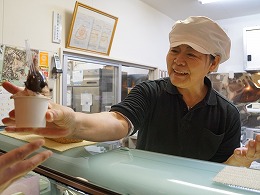
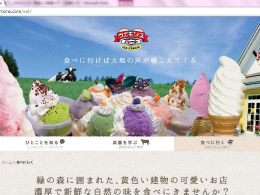
9. Draft-horse racing: The only place in the world to feature horses racing while pulling weighted sleds, passing on the agricultural history of northern Japan
・Ban’ei Horse Racing (Obihiro Racecourse)
・Horse Museum
http://www.banei-keiba.or.jp/language/english.html http://www.city.obihiro.hokkaido.jp/nouseibu/baneishinkoushitsu/banei.html

Prior to the introduction of farm machinery in Hokkaido, horses in the area were bred to be bigger and more powerful through selective breeding to help develop and cultivate farmland.
Ban’ei Horse Racing was born out of the harsh livelihoods of Hokkaido farmers during the Meiji period. It began as a race to test the power of farm horses, but later became a regular feature of farming festivals. This unique form of horse racing is a manifestation of local history that has produced the world’s sole race wherein horses pull a weighted sled.
The most notable feature of Ban’ei Horse Racing is the horses themselves, which can be twice as heavy as normal thoroughbreds. During the races, these equine behemoths compete by pulling an iron sled—weighing as much as 1 ton—along a 200-meter-long racetrack with two hills, thoroughly enchanting spectators in the process. In addition to speed, these dynamic races also involve power, stamina, and jockey technique. Such battles are very different from ordinary horse racing.
◆Tour participants will visit Obihiro Racecourse to see a mock race, as well as the Horse Museum, which exhibits artifacts and materials that trace the history of the horses that have long supported farming in Hokkaido. Participants will also visit a stable that houses retired racehorses, allowing visitors to fully appreciate the impressive size of these noble creatures.
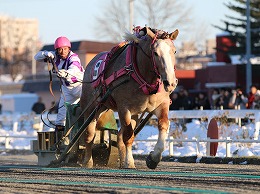
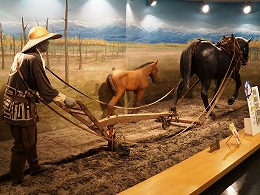

10. The heat is on in the cold kingdom of skating: Turning primary school students into top athletes through years of training
・Obihiro Forest Speed Skating Oval
With a population of about 170,000, the city of Obihiro is located in the Tokachi area of eastern Hokkaido. The city’s frigid winter weather has given rise to ice-based sports, producing an Olympic gold medalist and other top-notch athletes. Obihiro will provide a speed skating venue for the Asian Winter Games in February 2017.
Obihiro Forest Speed Skating Oval was built in 2009 as the nation’s second indoor speed skating rink. As the rink is indoors, it greatly benefits people who can use it for training purposes from late July to early March. Every day during this period, skaters ranging from primary school students to the world’s top athletes train enthusiastically for many hours. Visitors can see children from the city and surrounding areas visiting the rink to train after school hours, and parents dropping off and picking up their offspring at the venue. In 2014, about 248,000 people used the facility, which is designated as a national training center for speed skating,
◆Tour participants will visit Obihiro Forest Speed Skating Oval to observe the training sessions of primary school students who aspire to become top athletes.
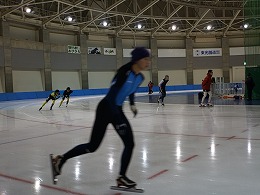
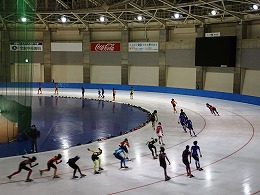
![19.s-オーバル[1]-trimmed-obihironomori](https://fpcj.jp/wp/wp-content/uploads/2015/12/b75da763a215a307568c3e05e812ed9a.jpg)
【Tour Outline】
1. Tentative Schedule: Jan. 27–29, 2016 (Wednesday–Friday)
Day 1 (Wednesday, Jan. 27)
08:30-10:05 Fly from Haneda Airport, Tokyo to New Chitose Airport, Hokkaido (JAL505)
10:15-11:30 Travel by bus from New Chitose Airport to Okurayama Ski Jump Stadium
11:30-13:00 Okurayama Ski Jump Stadium
13:00-13:45 Lunch
14:30-16:00 Learn about preparations for the Sapporo Snow Festival
16:30-18:00 Learn about utilization of Yezo deer
19:15 Evening meal (with Yezo deer possibly on the menu)
Spend night at hotel
Day 2 (Thursday, Jan. 28)
08:30 Leave hotel
09:00-09:30 Interview with mayor of Sapporo
10:15-11:15 Learn about use of snow/ice energy (Toshin Kita Snow-Melting Tank)
11:15-15:15 Travel by bus from Sapporo to Tokachi area
15:15-16:30 Visit to snow-based, potato-maturing facility—Moriura Farm (Memuro Town)
16:45-17:45 Obihiro Forest Speed Skating Oval
18:30 Evening meal; spend night at hotel
Day 3 (Friday, Jan. 29)
08:15 Leave hotel
09:00-09:30 Interview with mayor of Obihiro (*Newly arranged!)
10:10-11:25 Visit to a green house of Noraworks Japan
/mango cultivation based on energy derived from snow and hot springs (Otofuke Town)
12:00-12:45 Lunch: Tokachimura
12:45-14:00 Break time
14:00-15:30 Visit to Ban’ei Horse Racing (Obihiro Racecourse)
16:00-17:20 Visit to Liberty Hill Hirose Ranch
17:30-18:10 Travel by chartered bus to Obihiro Airport
19:10-20:55 Fly from Obihiro Airport to Haneda Airport (JAL576)
2. Qualification: Bearer of Gaimusho Press Registration Card
3. Fee: 20,000 yen per person. including transportation, meals and accommodation
* FPCJ will later inform the participants of methods for payment, cancellation fee etc.
4. Number of participants: Limited to 10 applicants.
(Only one reporter and one photographer from each company, but two participants from each TV team will be acceptable.)
5. FPCJ tour organizer: Chika Yoshida(Tel: 03-3501-3405)
6. Notes:
(1) There may be some restrictions on photographing and filming at the tour sites. Please follow the instructions of the officials on duty.
(2)The 8th Sapporo Asian Winter Games Organising Committee and the Foreign Press Center Japan will not be held responsible for any inconvenience, trouble or accidents that may occur during the tour.
(3)It is expected that temperatures in Obihiro in late January will be as low as 10 degrees below freezing. In light of this, we ask that each participant bring very warm clothing, appropriate footwear for snow, and give due consideration to the preservation of specialist equipment.
---- ---- ---- ---- ---- ---- ---- ---- ----
<Photo credits for this article> (unauthorized use of these images is forbidden)
(1) Tour Details 3.
Upper right and lower left: ©Noriyuki Sawa, Sapporo Snow Festival Executive Committee
(2) Tour Details 5.
Upper right: ©Yukiko Matsuura, the Yezo Deer Association
---- ---- ---- ---- ---- ---- ---- ---- ----




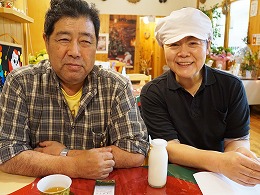
 http://www.city.obihiro.hokkaido.jp/shougaigakusyuubu/supo-tusinkousitsu/a320401speed.data/meijihokkaidotokachioval-english.pdf
http://www.city.obihiro.hokkaido.jp/shougaigakusyuubu/supo-tusinkousitsu/a320401speed.data/meijihokkaidotokachioval-english.pdf